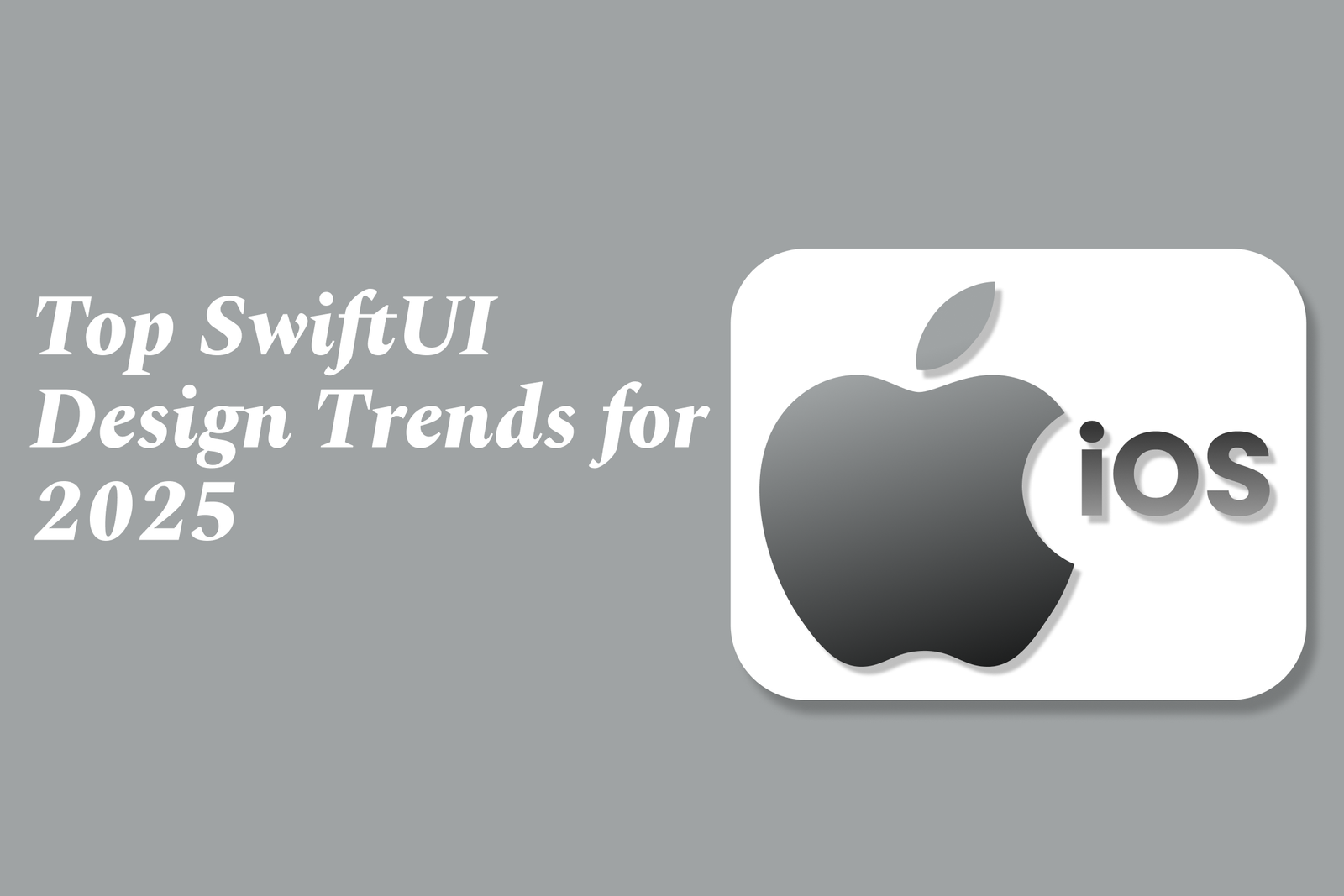Top SwiftUI Design Trends for 2025
Top SwiftUI design trends for 2025 focus on immersive 3D elements, AI-driven adaptive interfaces, glassmorphism, seamless cross-platform consistency, enhanced animations, and minimalistic, accessible layouts, creating dynamic, personalized, and visually engaging user experiences.
Top SwiftUI Design Trends for 2025
1 ) Interactive 3D Objects
In 2025, interactive 3D elements evolve beyond decorative uses to become dynamic components that shape user experiences. They enhance storytelling, increase user engagement through interactivity like rotation and zoom, and add realistic depth using technologies such as WebGL, AR, and VR, making interfaces immersive and responsive.
2 ) AI Interfaces and Presence
Artificial intelligence integration advances from purely functional to aesthetic roles. AI generated dynamic UIs adapt in real time, providing personalized content like flashcards or interactive materials. Visual cues, such as gradient styles, will indicate AI generated elements, improving transparency and trust in interactions. Apple and IBM exemplify this trend via gradient inputs distinguishing AI content.
3 ) Glassmorphism in UI Design
Glassmorphism, characterized by translucent, frosted glass like UI components, will continue gaining attention. It introduces depth and contrast without overwhelming complexity. Proper use enhances visual hierarchy, yet designers must balance it carefully to avoid usability and accessibility issues.
4 ) SwiftUI and Reactive Programming Growth
SwiftUI remains crucial due to its declarative syntax and efficiency, reducing UI build times by 30%. Combine, a reactive programming framework, complements UIKit for handling asynchronous events smoothly, enhancing app responsiveness and code maintainability.
5 ) Advanced Design Systems and Cross Platform Consistency
Companies increasingly adopt comprehensive design systems for consistency, scalability, and rapid prototyping. Apple's upcoming “Liquid Glass” design introduces a cross platform dynamic translucent look, unifying UI elements across iOS, iPadOS, macOS, watchOS, and tvOS, promoting cohesive user experiences.
6 ) AI Powered Personalization and Adaptive Interfaces
Personalization driven by AI becomes key to user engagement, with interfaces that learn user habits. This trend is supported by new frameworks offering on device AI capabilities and systemwide intelligence, facilitating smarter shortcuts, translations, and personalized communication.
7 ) Emphasis on Minimalism and Accessibility
Minimalist designs focused on clarity and simplicity will dominate, enhancing usability across multiple device sizes and accessibility needs. Adaptive layouts and dark mode features contribute to a seamless, user friendly experience tailored to diverse preferences.
8 ) Integration of Animation and Visual Effects
Enhanced animations and fluid visual effects, including metal shaders and spatial design, create engaging, tactile interfaces. Tools like Lottie for animation and frameworks supporting detailed illustrations will be pivotal for enriching user interaction.
Summary:
The SwiftUI design trends for 2025 center on creating immersive, adaptive, and intelligent user experiences by leveraging interactive 3D objects, AI generated interfaces, glassmorphic transparent elements, and powerful frameworks like SwiftUI and Combine. Unified cross platform designs such as Apple’s new Liquid Glass style and heightened personalization through AI will redefine app aesthetics and functionality. Simplified, accessible designs alongside engaging animations ensure UI remains user centric and innovative in the evolving digital landscape.
https://justacademy.in/news-detail/flutter-forward-2025-recap
https://justacademy.in/news-detail/best-companies-hiring-flutter-devs
https://justacademy.in/news-detail/why-react-native-is-still-relevant-in-2025
https://justacademy.in/news-detail/react-native?s-latest-update-fixes-your-biggest-performance-issues
https://justacademy.in/news-detail/flutter-4.0-release-date-and-roadmap
Related Posts
Java supports GDPR and data privacy by enabling secure data handling through encryption, controlled access, and precise data management. It allows developers to minimize PII exposure, ensure data confidentiality, and design workflows that comply with data protection regulations effectively.
Java code quality tools have evolved to include advanced static analysis, integrated security checks, and AI-powered code reviews. These updates help developers detect bugs, enforce coding standards, and enhance security, streamlining the development process and improving overall code reliability.
Java remains a cornerstone in big tech companies, evolving with modern features like records, pattern matching, and virtual threads. Its robust ecosystem, enhanced performance, and growing AI integrations keep it vital for both legacy systems and innovative new projects.
Java and CI/CD pipeline optimizations streamline Java application development by automating builds, tests, and deployments. They improve efficiency through parallelization, caching, and secure secrets management, enabling faster feedback loops and more reliable, scalable software delivery.
Java supports modern cryptography standards through its flexible Java Cryptography Architecture (JCA), enabling integration of advanced algorithms like AES, EdDSA, and post-quantum tools. Libraries like Bouncy Castle offer FIPS-certified, hardware-accelerated implementations for secure development.
Java 23 enhances record patterns by enabling concise, direct destructuring of record components within pattern matching, simplifying type checks and data extraction. This improvement boosts code readability and expressiveness by reducing boilerplate in handling immutable data classes.
Java remains a top choice for mobile app backends, powering scalable, secure, and high-performance server-side solutions. Latest trends include cloud-native microservices, reactive programming, and enhanced JVM optimizations, enabling efficient, flexible, and robust mobile backend development.
Java SE 24 and LTS Java SE 21 offer enhanced features and performance, while Apache Spark 4.0.0 introduces Scala 2.13 support and advanced ML and SQL capabilities. Together, they empower developers to build scalable, high-performance data applications with modern tools.
JUnit 5 modernizes Java testing with a modular architecture, improved assertions, and seamless Java 8+ support. Beyond JUnit, tools like Mockito and AssertJ enhance mocking and assertions, creating a powerful, flexible ecosystem for writing clean, efficient Java unit tests.
Java plays a pivotal role in cloud automation tools by providing a robust, platform-independent language used to build scalable automation frameworks like Jenkins and Selenium, enabling efficient CI/CD pipelines, testing, and orchestration across diverse cloud environments.










